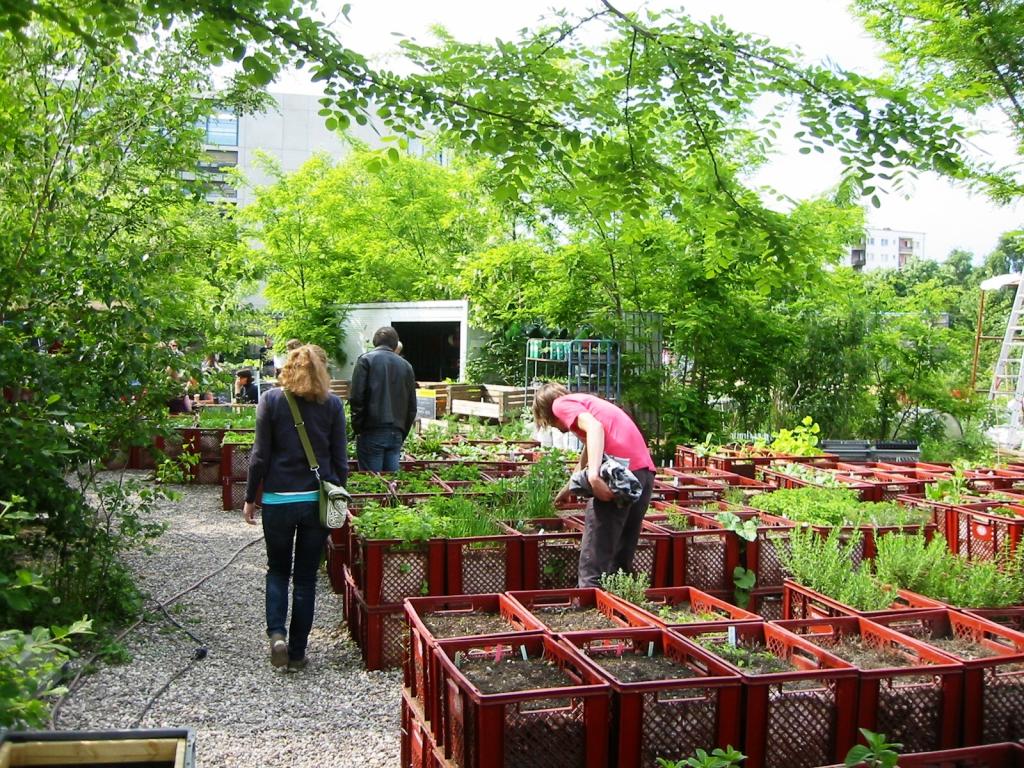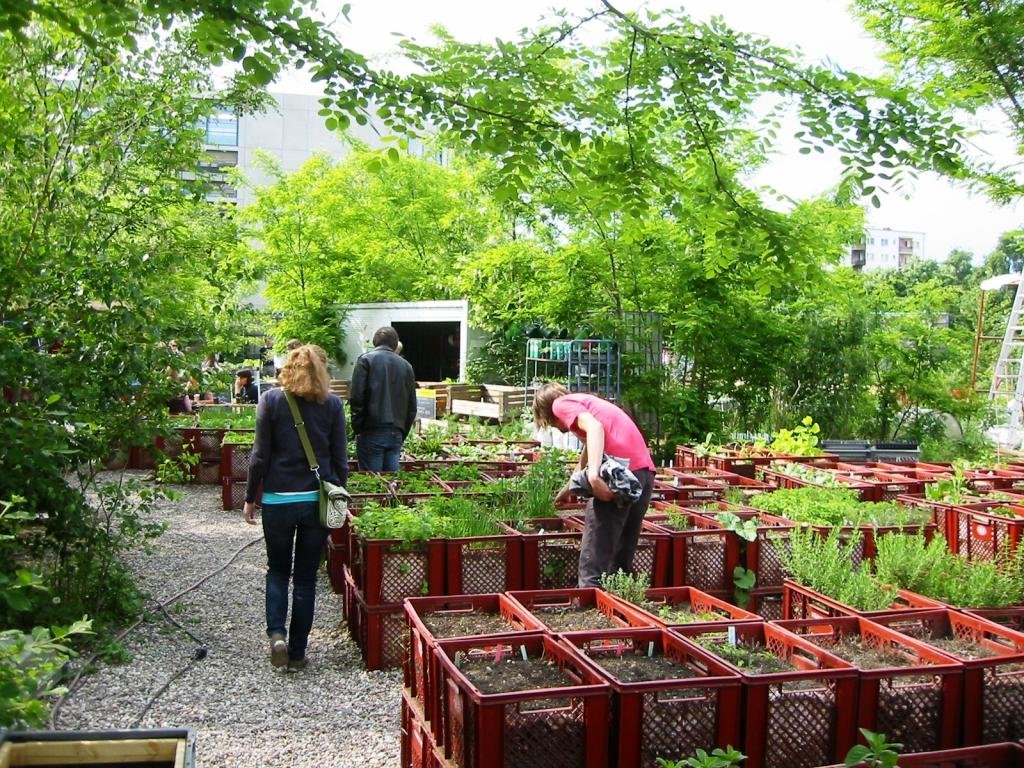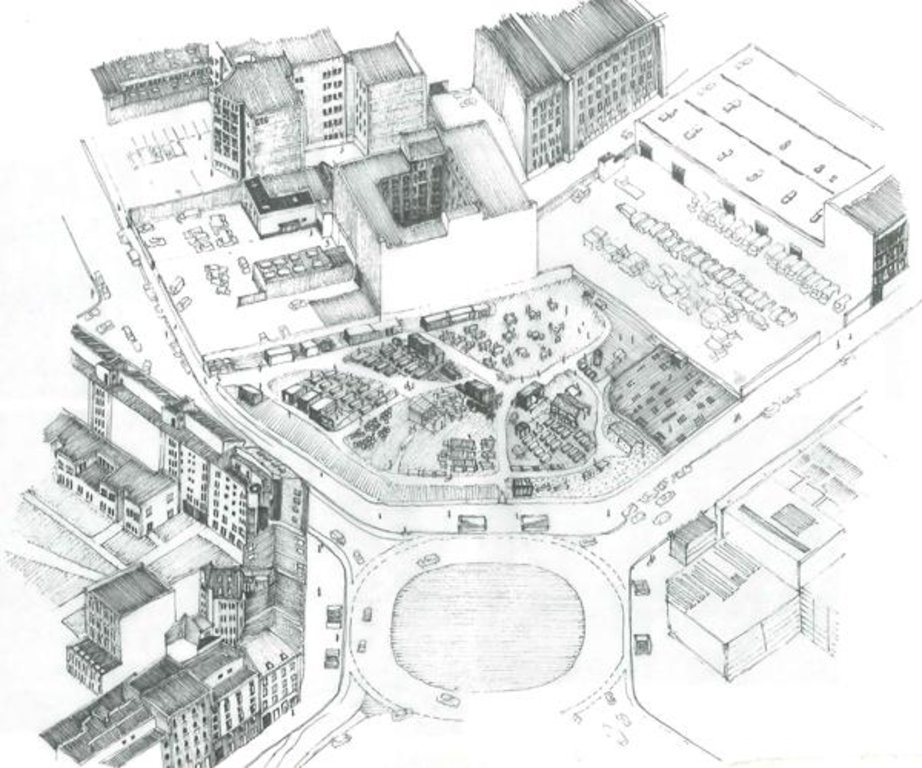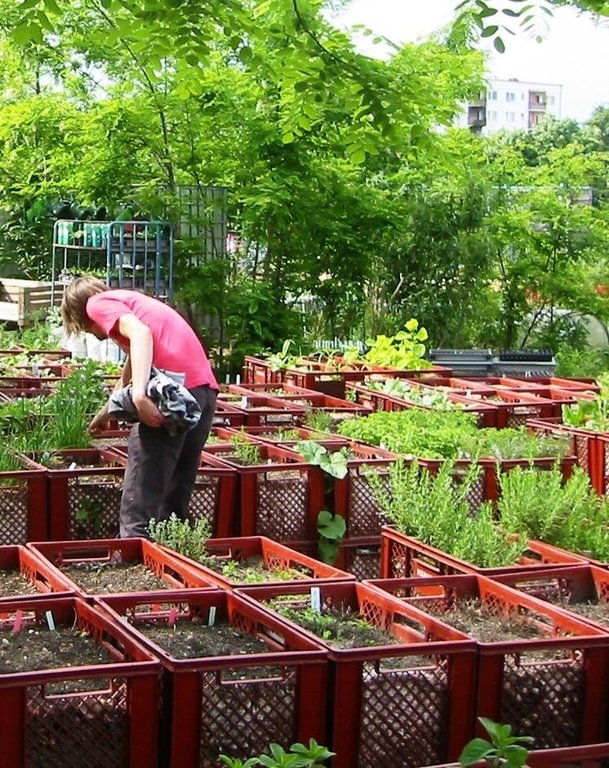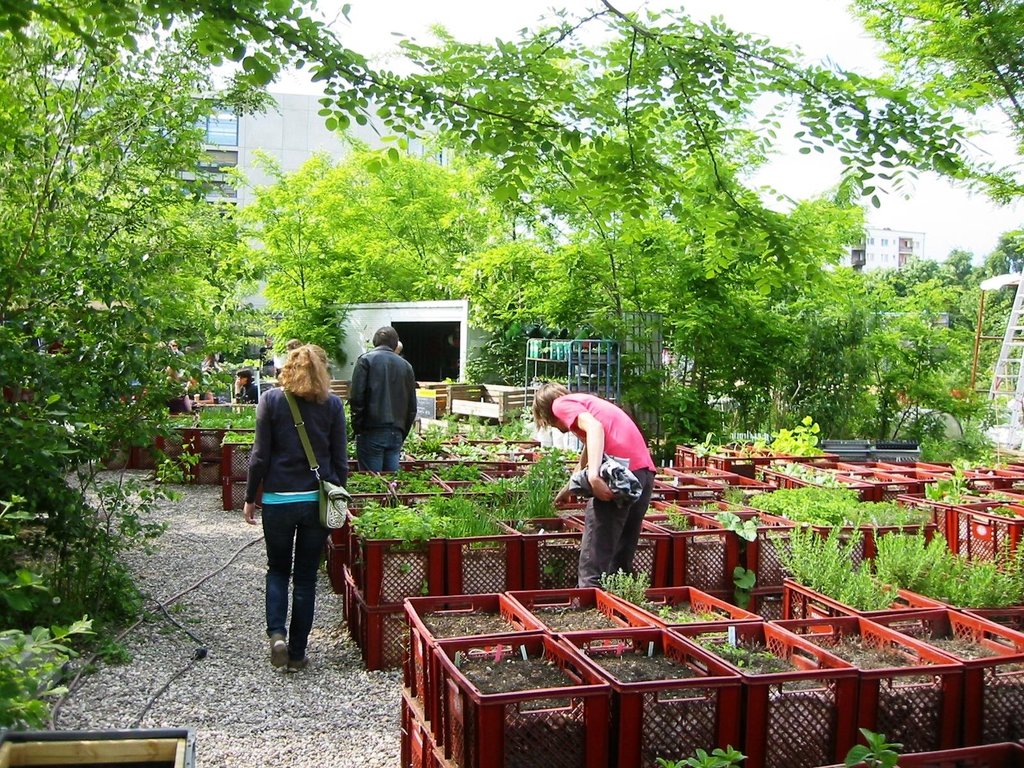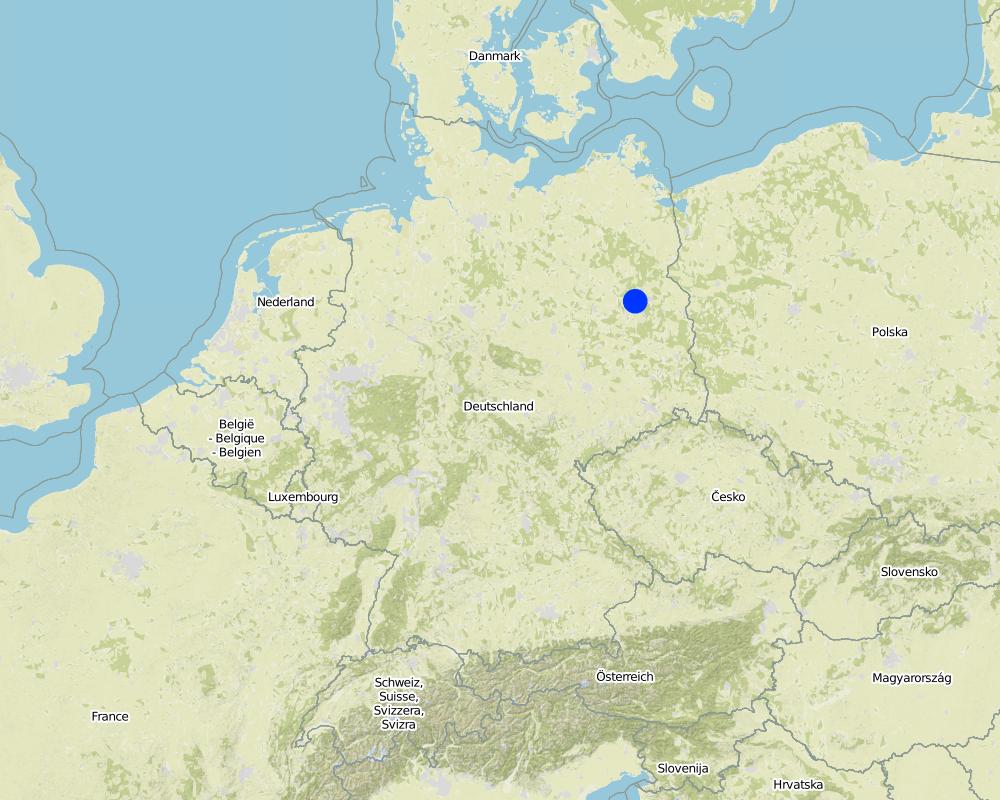Mobile Community Garden [Германия]
- Создание:
- Обновить:
- Составитель: Peter Kirch
- Редактор: –
- Рецензент: Fabian Ottiger
approaches_2603 - Германия
Просмотреть разделы
Развернуть все Свернуть все1. Общая информация
1.2 Контактные данные специалистов и организаций, участвующих в описании и оценке Подхода
Специалист по УЗП:
Shaw Robert
kontakt@prinzessinnengarten.net
PRINZESSINNENGARTEN BERLIN
Prinzenstrasse 35 – 38, Berlin
Германия
Название организации (-ий), содействовавших документированию/оценке Подхода (если применимо)
Technische Universität Berlin (Technische Universität Berlin) - Германия1.3 Условия, регламентирующие использование собранных ВОКАТ данных
Когда были собраны данные (на местах)?
08/05/2015
Составитель и ответственный/-ые специалист(-ы) согласны с условиями, регламентирующими использование собранных ВОКАТ данных:
Да
2. Описание Подхода УЗП
2.1 Краткое описание Подхода
The SLM approach can be defined as community supported mobile urban farm, which serves the goals of vegetable production, and place of learning and knowledge sharing.
2.2 Подробное описание Подхода
Подробное описание Подхода:
Aims / objectives: The objective of the SLM approach 'Prinzessinnengarten' was to create an urban garden on a waste land plot in the center of Berlin. The plot was characterised by having sealed and contaminated soils, which is characteristic for open land plots in most urban areas. The garden is supposed to practically demonstrate an ecologically and socially different approach to urban spaces and their inhabitants, enable the social empowerment of marginalized communities. Furthermore opportunities for local micro-economies and other economic models are supposed to be created. In an unobtrusive and pragmatic way, urban gardens in general aim to raise the question of 'How we want to live in our cities in the future?
Methods: The project was first was implemented by the group Nomadisch Grün (Nomadic Green) in summer of 2009. Along with friends, activists and neighbours, the group realised the first steps of implementation through clearing of rubbish and through the construction of the first cultivation units. The project, being open to everybody, attracted new participants quite fast. Now the garden owes its existence to the commitment of countless neighbors and interested people. The work of these participants, their diverse skills and ideas transform the place continuously.
Stages of implementation: I. Development of the idea. During this phase of implementation mainly Robert Shaw (he was involved in similar projects in Cuba before) and Marco Clausen were involved.. II. Implementation in practice. Starting in summer of 2009, the project idea was being implemented on the ground by a group of people. During this stage of implementation mainly physical work, such as the clearing of rubbish was realised. III. Opening to the wider public (still ongoing). The non-profit company 'Nomadisch Grün (Nomadic Green) serves as a framework for the different social, educational and economic activities with the primary aim of making the garden a place of learning. Skills are gained through practical experience and knowledge sharing.
2.3 Фотографии, иллюстрирующие Подход
2.5 Страна/ регион/ место, где применялся Подход
Страна:
Германия
Административная единица (Район/Область):
Berlin
Более точная привязка места:
Kreuzberg
Map
×2.6 Даты начала и окончания реализации Подхода
Год начала реализации:
2009
2.7 Тип Подхода
- недавняя местная инициатива/ инновация
2.8 Каковы цели/ задачи Подхода
The Approach focused mainly on other activities than SLM (utilisation of waste land/abandoned land plots, urban areas,production of vegetables, place of knowledge sharing)
The aim of the project was to find solutions for the lack of knowledge sharing within the society and to address the topic of food production.
The SLM Approach addressed the following problems: The main problems addressed by the approach can be described as manifold, e.g. insufficient local food production, or the general lack of public spaces for knowledge sharing and exchange within the community.
2.9 Условия содействующие применению Технологии/ Технологий в рамках Подхода или затрудняющие его
Наличие/ доступность финансовых ресурсов и услуг
- затрудняют
Treatment through the SLM Approach: attempt to diversify the income
Институциональные условия
- затрудняют
no official institution is clearly responsible for this type of approach
Treatment through the SLM Approach: regular exchange with politicians, especially on local level
Нормативно-правовая база (землевладение, права на земле- и водопользование)
- содействуют
The existing land ownership, land use rights / water rights helped a little the approach implementation: As the existing land ownership was already known before the implementation of the approach started, this aspect was being strongly considered (leading to the design of a mobile cultivation system). Furthermore the existing land ownership (the community is owning the land) led to the possibility to have public negotiations about the renting contract. If the area would have been in private ownership such negotiations would not have been possible and it is more than likely that the Approach could not have been realised in the way it is realised now.
- затрудняют
no long term renting contract, no official institution is clearly responsible for this type of approach
Treatment through the SLM Approach: political campaign
Объем работ, доступность рабочей силы
- затрудняют
due to the high presence in the media there is a high demand for communication acitivities
Treatment through the SLM Approach: establishment of paid jobs to have people working professionally on certain topics
3. Участие и распределение ролей заинтересованных сторон
3.1 Заинтересованные стороны, участвующие в реализации Подхода и их роли
- местные землепользователи/ местные сообщества
In the surroundings of the Moritzplatz a great part of the population were/are immigrants (most of them coming from muslim countries) and people without a job. In principle the project was/is open for all people, including disadvantaged groups as well. During the interviews it was said though that the selling and consumption of alcohol on the project area could have led to the fact that especially immigrants from muslim countries could have been felt excluded.
3.2 Участие местных землепользователей/ местных сообществ на разных стадиях реализации Подхода
| Участие местных землепользователей/ местных сообществ | Перечислите участников и опишите их вовлеченность | |
|---|---|---|
| инициирование/ мотивация | самоорганизация | There was a constant change of the people that were being involved in the different phases of the project. The decision to what degree people got involved, were to be taken under the consideration of the personal needs and possibilities. |
| планирование | самоорганизация | There was a constant change of the people that were being involved in the different phases of the project. The decision to what degree people got involved, were to be taken under the consideration of the personal needs and possibilities. |
| выполнение | самоорганизация | There was a constant change of the people that were being involved in the different phases of the project. The decision to what degree people got involved, were to be taken under the consideration of the personal needs and possibilities. |
| мониторинг/ оценка | самоорганизация | There was a constant change of the people that were being involved in the different phases of the project. The decision to what degree people got involved, were to be taken under the consideration of the personal needs and possibilities. |
| Research | интерактивное |
3.4 Принятие решений по выбору Технологии/ Технологий УЗП
Укажите, кто принимал решение по выбору применяемой Технологии/ Технологий:
- исключительно землепользователи (по собственной инициативе)
Поясните:
Decisions on the method of implementing the SLM Technology were made by by land users* alone (self-initiative / bottom-up)
4. Техническая поддержка, повышение компетенций и управление знаниями
4.1 Повышение компетенций/ обучение
Проводилось ли обучение землепользователей/ других заинтересованных лиц?
Да
Укажите, кто проходил обучение:
- землепользователи
Тип обучения:
- в ходе работы
- обмен опытом между фермерами
- опытные участки
- общие собрания
- курсы
Рассматриваемые темы:
Through creating a open public space/place and by offering manifold practical activity the approach provides training by using a peer to peer approach on topics like biodiversity, healthy eating, recycling, environmental justice, climate change and food sovereignty. This training / awareness raising takes place informally (peer to peer) as well as formally (announced courses, lectures, discussions)
4.2 Консультационные услуги
Есть ли у землепользователей возможность получать консультации?
Да
Описание/ комментарий:
Advisory service is inadequate to ensure the continuation of land conservation activities
4.3 Институциональная (организационная) поддержка
В ходе реализации Подхода были ли организованы новые институциональные структуры или поддержаны уже существующие?
- нет
4.4 Мониторинг и оценка
Являются ли мониторинг и оценка частью Подхода?
Да
Комментарии:
bio-physical aspects were ad hoc monitored by land users through observations
bio-physical aspects were regular monitored by other through measurements
technical aspects were ad hoc monitored by land users through observations
socio-cultural aspects were ad hoc monitored by land users through observations
economic / production aspects were ad hoc monitored by land users through observations
no. of land users involved aspects were ad hoc monitored by land users through observations
management of Approach aspects were ad hoc monitored by land users through observations
There were several changes in the Approach as a result of monitoring and evaluation: There is a constant change according to the findings of the monitoring and the needs/possibilites of the project participants.
There were few changes in the Technology as a result of monitoring and evaluation: The research of the Technical University of Berlin showed that vegetables which were cultivated very close to the street, contained more pollutants. Therefore a 'green belt' of about 2 m width was established around the garden, where only non-food-crops are cultivated
4.5 Научные исследования
Были ли научные исследования частью Подхода?
Да
Укажите темы исследований:
- экология
Напишите подробнее и назовите тех, кто выполнял исследования:
There was research on the soil and plant quality and possible contamination of the soil and the plants (performed e.g. by the Technical University of Berlin)
Research was carried out both on station and on-farm
5. Финансирование и внешняя материальная поддержка
5.1 Годовой бюджет мероприятий по УЗП в рамках Подхода
Если точный годовой бюжет неизвестен, укажите примерный диапазон затрат:
- 100 000-1 000 000
Комментарий (например, основные источники финансирования/ ключевые доноры):
Approach costs were met by the following donors: local community / land user(s): 100.0%
5.2 Финансирование и внешняя материальная поддержка, предоставляемая землепользователям
Предоставлялась ли землепользователям финансовая/ материальная поддержка для применения Технологии /Технологий?
Да
5.3 Субсидии на отдельные затраты (включая оплату труда)
- инфраструктура
| Укажите, какие ресурсы были субсидированы | В какой степени | Опишите субсидии подробнее |
|---|---|---|
| Kitchen | профинансированы частично | For educational purposes |
Если труд землепользователя был существенным вкладом, укажите, был ли этот вклад:
- добровольный
5.4 Кредитование
Предоставлялись ли в рамках Подхода кредиты на мероприятия УЗП?
Нет
6. Анализ влияния и заключительные положения
6.1 Влияние Подхода
Сумел ли Подход помочь землепользователям внедрить и поддерживать технологии УЗП?
- Нет
- Да, немного
- Да, умеренно
- Да, существенно
The approach helped the land users to cultivate on areas, which were not suitable for cultivation before. Furthermore the approach enhanced the knowledge sharing concering different topics regarding sustainable land management. Therefore the impact of the Approach on SLM is not only to be measured on the project area itself, but also under consideration of the outreach of the project.
Сумел ли Подход расширить возможности социально и экономически уязвимых групп?
- Нет
- Да, немного
- Да, умеренно
- Да, существенно
Through the Approach a space for knowledge sharing was created, which is also open for socially and economically disadvantaged groups. The utilisation of this space by the groups in question is limited up to date though.
Did other land users / projects adopt the Approach?
- Нет
- Да, немного
- Да, умеренно
- Да, существенно
The approach was adopted in modified ways in several urban gardening projects accross Germany. It is not possible to quantify the number. A guess would be around 20.
Did the Approach lead to improved livelihoods / human well-being?
- Нет
- Да, немного
- Да, умеренно
- Да, существенно
Creation of a space open to the public, which is dedicated for knowledge sharing.
Did the Approach help to alleviate poverty?
- Нет
- Да, немного
- Да, умеренно
- Да, существенно
The goal of the approach was not set on the alleviation of poverty.
6.2 Основные причины, побуждающие землепользователей внедрять УЗП
- рост продуктивности
- причастность к движению/ проекту/ группе/ сети
- экологическая сознательность
- well-being and livelihoods improvement
6.3 Долгосрочная устойчивость мероприятий в рамках Подхода
Могут ли землепользователи самостоятельно (без внешней поддержки) продолжать применение того, что было реализовано в рамках Подхода?
- да
Если да, опишите как:
Through the diverse income opportunities (consulting, selling/using the produce in gastronomy, donation) the Approach activities can be self-financed.
6.4 Сильные стороны/ преимущества Подхода
| Сильные стороны/ преимущества/ возможности по мнению землепользователей |
|---|
| not dependent on a certain plot (mobility, flexibility) |
| flat hierachy leads to the fact, that a lot of people can bring in their ideas easily |
| Everybody can decide on his/her own to what extend he/she wants to get involved and in what kind of activity. Through this the participants can focus on their strengths and there is little chance that overworking occurs. |
| Creation of paid jobs |
| Сильные стороны/ преимущества/ возможности по мнению составителя или других ключевых специалистов |
|---|
| self-financed |
| sharing of knowledge (possible between all participants) |
| open to everybody |
6.5 Слабые стороны/ недостатки Подхода и пути их преодоления
| Слабые стороны/ недостатки/ риски по мнению землепользователей | Возможные пути их преодоления/снижения? |
|---|---|
| only to a certain point 'sustainable', as the project is dependent on a great amount of external inputs (water, plastic boxes) |
| Слабые стороны/ недостатки/ риски по мнению составителя или ответственных специалистов | Возможные пути их преодоления/снижения? |
|---|---|
| only to a certain point 'sustainable', as the project is dependent on a great amount of external inputs (water, plastic boxes) |
7. Справочные материалы и ссылки
7.1 Методы сбора/источники информации
- выезды на места, полевые обследования
- опросы землепользователей
7.2 Ссылки на опубликованные материалы
Название, автор, год публикации, ISBN:
website, 2015
Где опубликовано? Стоимость?
prinzessinnengarten.net/
Ссылки и модули
Развернуть все Свернуть всеСсылки
Нет ссылок
Модули
Нет модулей


